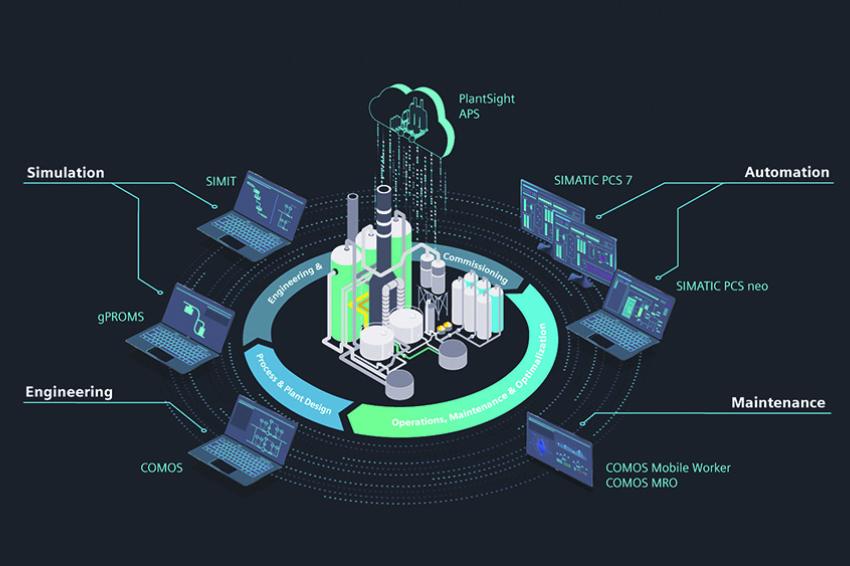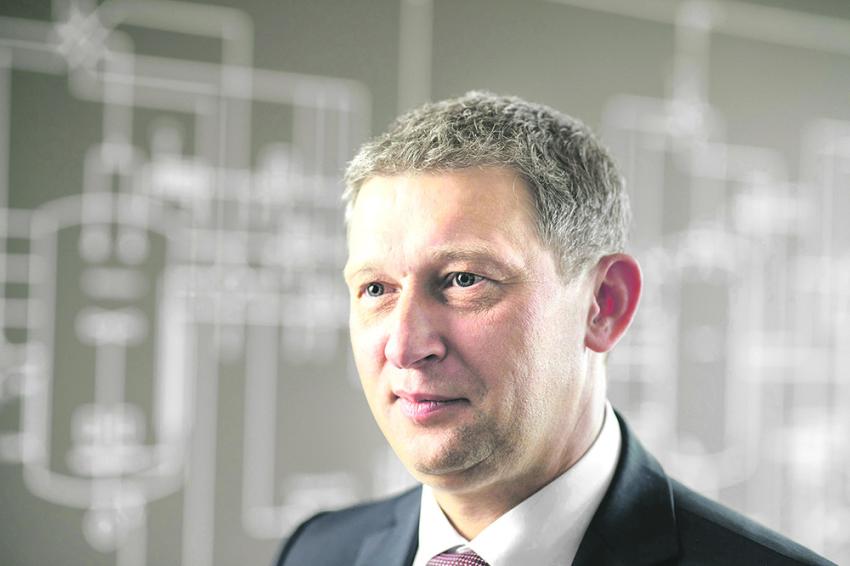This Is the Future for the Digital Twin
Tomorrow's Digital Twin Has the Potential to Fundamentally Transform the Chemical Industry
Today's dynamic markets confront the chemical industry with cost pressures, supply chain disruptions, demands for faster market entry, the realization of multi-purpose plants, and the need to reduce and document the CO2 footprint. At the same time, all applications in a process plant must comply with the latest safety requirements and regulations. To successfully address these changes, digitization, data and software are the most significant levers — especially in the form of the digtal twin.
This approach combines the digital and real worlds, enabling data-driven decisions to be made throughout the lifecycle of plants, processes, and production across all functions and levels. This idea has been around for some time, but with the rapidly growing possibilities of digitization and, above all, in combination with artificial intelligence, the Digital Twin holds powerful potential for the entire process industry.
Digital Twin from a Flow
The digital twin is equally suitable for greenfield and brownfield applications. It is crucial that the right and, above all, interoperable software is used depending on the phase of a plant's lifecycle — from process design, plant engineering, commissioning, training, operation, and maintenance. For greenfield plants, the design process starts with simulations using process modeling software like gProms from Siemens to determine optimal process designs for a plant. gProms captures deep process knowledge in mathematical models that describe the physics and chemistry of process sequences. This data is then used to create, for example, process flow diagrams (PFDs), which are further developed into detailed piping and instrumentation diagrams (P&IDs) that describe the processes and equipment of a plant in detail. P&IDs represent elements such as tanks, pipes, and valves and show how processes are controlled using automation elements such as sensors and actuators.
For the various disciplines of plant construction, such as process engineering, electrical engineering, system engineering, piping, and automation, an engineering tool like Comos helps create the digital twin. Subsequently, the hardware and software of the process control system (DCS) must be set up and configured. For this, Siemens' plant automation accelerator offers an integrated engineering approach. After DCS engineering, the critical phase of acceptance testing and commissioning begins. With the SIMIT software, the DCS behavior can be simulated for virtual commissioning while the real plant is still under construction. By reusing data from the process control system, Simit, Comos, and gProms, the complete plant behavior can be simulated before commissioning. If a 3D model of a plant is available, Comos Walkinside allows early training of the operating personnel using virtual reality. This reduces commissioning effort, minimizes errors, lowers project costs, and accelerates commissioning.
“The establishment and continuous maintenance of a digital twin require standardization of data for seamless interoperability of different systems.”
Digital Twin for Brownfield Plants
In the case of existing plants, operators benefit from a digital twin during the operational phase. Most data from old plants are stored and managed by independent applications from different providers in the form of engineering systems, process control systems, manufacturing execution, or asset management systems. Additionally, a large part of the technical plant documentation and data is often only available in paper form. Such a fragmented and heterogeneous system landscape leads to data silos with low data quality and consistency, making data-driven decisions difficult. Siemens PlantSight software offers a cloud-based portal for this purpose that, with the integration of XHQ, consolidates data from various sources and links it to real-time plant information. This ensures that data from all systems is clearly and efficiently visualized. A digital twin of processes and production of a brownfield plant can then be created.
Ultimately, the establishment and continuous maintenance of a digital twin require standardization of data for seamless interoperability of different systems. Many plants rely on separate systems for engineering, automation, and simulation, complicating data exchange. The combination of applications such as Comos, gProms, Simit, and the DCS system, on the other hand, ensures consistent data updates and optimizes the productivity and performance of a plant. With the Simatic PCS neo process control system, Siemens has introduced the module type package (MTP) standard to describe the properties of plant modules. This ensures consistent information flow, fewer errors, faster engineering, and flexible plant operation.
Example from Specialty Chemicals
Siemens has created a digital twin application to optimize batch production processes, especially in the paint and coatings industry. The digital twin covers digital process design and plant construction, digital recipe and process development and simulation, and digital process and plant operation. The template for this project highlights various features and functionalities of the digital twin implementation for batch production. These include recipe management, which allows efficient product adaptation and scaling, and process simulations, which enable virtual testing of the entire production process. Batch-based automation follows the S-88 philosophy for batch control, ensuring flexible production. The digital twin continuously monitors the production process by collecting data from various sensors and devices. This real-time monitoring allows operators to closely monitor critical process parameters, detect deviations, and take immediate corrective action to ensure consistent product quality. The MES functionality also makes sure that essential process and production information is available in real-time. Finally, integration with ERP systems ensures smooth data exchange between production and business systems.
These features ultimately lead to increased efficiency and sustainability, as the production process is optimized, and energy consumption is reduced. Although this digital twin concept was originally developed for water-based paints, it can also be applied to other specialty chemicals. This underscores the potential of this technology to revolutionize the chemical industry.
“A large part of the technical plant documentation and data is often only available in paper form.”
How to Start?
Building a digital twin can be a complex task. Chemical companies typically face two scenarios:
- No defined digital twin strategy: In this case, Siemens offers step-by-step consulting to outline the digitization process, including a five-year roadmap with projects, technical specifications, and investment plans. This roadmap ultimately aligns with the company's strategy and existing IT and OT systems. The goal is to integrate the best technology with minimal disruption to operations and personnel.
- Digital twin strategy in implementation: After initial successes, companies need to maintain momentum and prioritize the next steps. Siemens offers modular solutions tailored to the digital maturity and strategy of the company. The digital twin is, therefore, a constantly evolving entity. Siemens' modular services can cover specific technical areas such as cybersecurity or broader topics like data management.
Outlook
Digital transformation is already significantly changing the chemical industry today. Rising energy costs and the pressure on companies to produce CO2-neutral are essential drivers of this change. Digital twin applications will help companies significantly reduce their energy costs and keep track of CO2 emissions in production. Many tasks will be taken over by artificial intelligence and shifted from the real plant to the virtual environment: testing alternative plant and machine configurations, predicting maintenance intervals, or supporting production-related decisions.
With the use and offering of more and more digital business models, value chains will be much more closely linked across companies. In the long term, the digital twin is the basis for global collaboration in strategic partnerships and ecosystems and will further break down barriers between different domains.
Author: Bart Moors, General Manager Process Industries Software, Siemens
“To successfully address these challenges in process industries, digitization, data, and software are the most significant levers – especially in the form of the digital twin. This approach combines the digital and real worlds, enabling data-driven decisions to be made throughout the lifecycle of plants, processes, and production across all functions and levels. The idea has been around for some time, but with the rapidly growing possibilities of digitization and, above all, in combination with artificial intelligence, the digital twin holds powerful potential for the entire process industry.”







